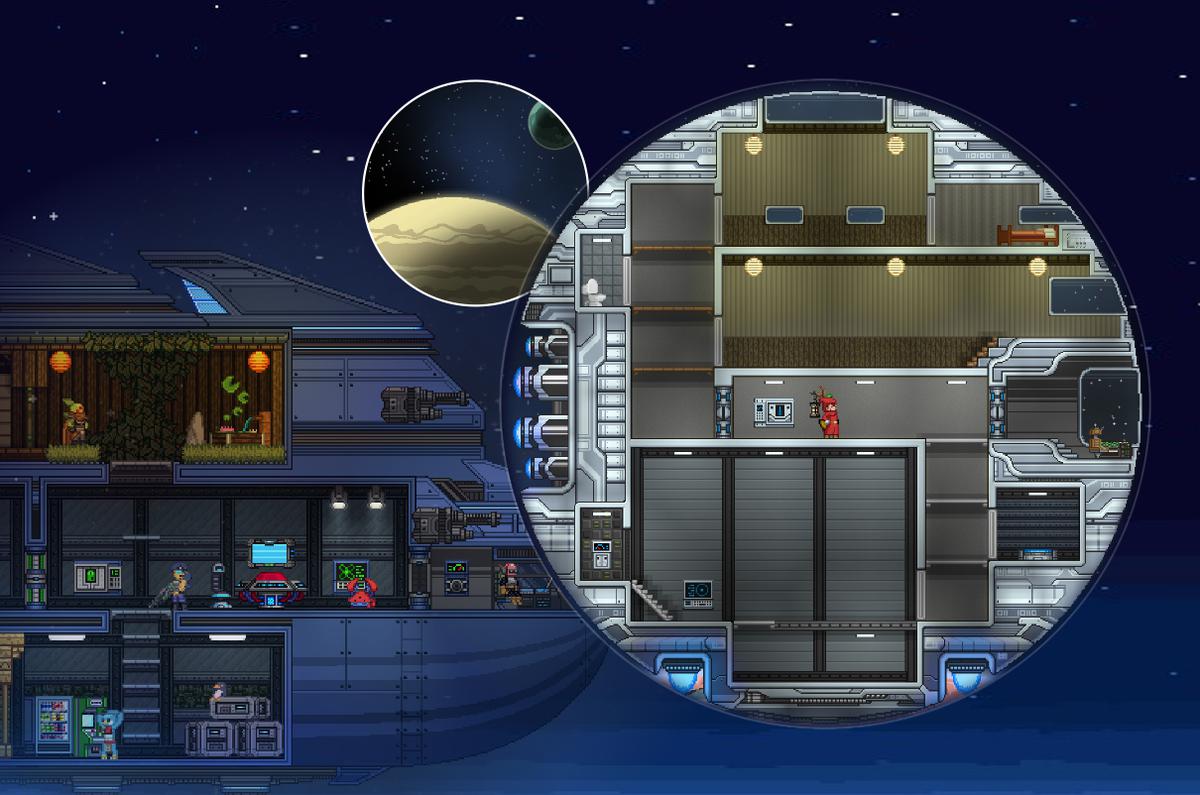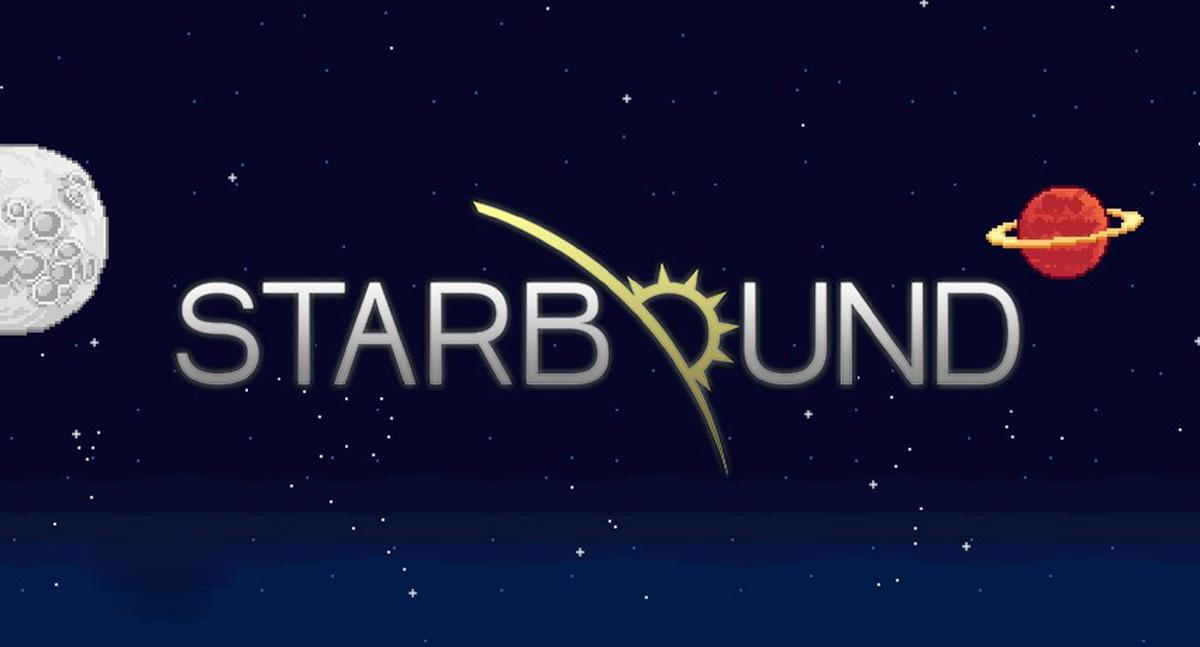Coming from developer Chucklefish, the same name behind the immensely fun Stardew Valley, Starbound is a 2D, crafting and exploration-based 16-bit game that is as involving as the game is graphically simple. There’s a charm to old-school graphics that draws one into a title such as this, and while the market is almost saturated with titles like this, nobody really buys a game for its graphics. This isn’t to say it doesn’t have striking visual
appeal-—quite the opposite actually. In your eventual travels, you’re going to encounter stunning views on planets that have landscapes that will leave you staring at your monitor in wonder. We aren’t exaggerating. It’s quite a sight for a 16-bit game.
Controls are simple. It’s a side-scroller, but since you will be interacting with the environment a lot, it’s really meant to be played with both the keyboard and mouse. Once you pick a character race and get the intro and tutorial missions out of the way, you head straight into the rest of the in-game universe. As you go, you discover a force of great evil that hopes to undo the order that surrounds your world.

The story isn’t that much of a focus in this title, though it’s certainly a solid goal. If you would much rather explore, build, farm, and hunt, you could totally do just that. In any case, for you to be able to progress, you will have to do all of the above anyway. To get the technology you need to progress, you’re going to have to gather resources and materials for all the crafting the game wants you to do. From going deep into the center of planets for ore, and heading to other star systems for rarer materials, you’re going to be spending a lot of time picking up stuff and refining them. This is made much easier thanks to your Material Manipulator—the one tool you’re going to use about 90 percent of the time. This lets you mine, collect items from the surface, and place items that you’ve created onto the world.
At the start, the sheer number of things you can do is overwhelming. The game lets you craft anything you can as long as you have the materials, and it’s very generous about providing you with necessary blueprints to make that happen. What makes the game a little more taxing, however, is the hunger system. Apart from HP, you constantly have to stay fed or you die. To make matters worse, food spoils, so the steak you hunted a few cycles ago might not be edible once you’re deep in a mine with nothing to eat and a bottomed out hunger gauge. Some food lasts longer than others, and it’s up to you to figure out what works best over time.
Being also an exploration game, there is an element of combat in Starbound as well. Players will find or craft weapons of different classes and abilities that allow any number of effects, including elemental or poison damage for some of the higher-level hardware. Combat is done in real time, and opening your inventory doesn’t pause the action, so you’re going to have to be fast and dispatch the hostile creatures before they knock you down to zero health. The game does provide a belt system similar to that in the game Diablo, so you can select and use items quickly, and without too much trouble.
Death in the game is more of an inconvenience than an ending (unless you pick permadeath mode, but that’s just insane). Should you starve, fall down a hole, drown, or take too much damage, you simply respawn in your orbiting ship, with the option to beam back down and retrieve all the items you had in your inventory. You do take a penalty of 30 percent of all your money, so it’s not totally painless, which is great because it happens alarmingly often.
Your character can also perform upgrades to equipment and armor, allowing you access to planets that have hostile environments, effectively locking those portions of the game until you have achieved a certain level of technology. From heating, to breathing, to radiation protection, your character’s gear has to be up to scratch before you go hunting for exotic gear and materials in worlds that are just out of reach. It’s a clever way of reining the player in, and one that doesn’t rely on a thin story to be believable.
The crafting element is a great addition to exploration, and building up on technology that allows you to explore other worlds, to get items for even better hardware is great, and it really gives you a sense of purpose. Changing landscapes keeps the experience fresh, and the never-ending hunt for items makes you want to keep coming back for more. It’s a very simple game to pick up and play, and one that keeps you trying to hunt for a slightly better weapon, or just a few more potatoes to plant, and maybe just 20 more pieces of durasteel ore for a nice new door for that rec room you’re building. You will not notice time go by. You have been warned. You can even play co-op and drag a friend down the rabbit hole with you.
For the cost of a few coffees at your local shop, you’ve got a game that has absurdly high replay value, great immersion, and countless planets to explore. It’s definitely money well-spent.
Also published in GADGETS MAGAZINE September 2016 Issue
Words by Ren Alcantara
Developer: Chucklefish Games | Publisher:Chucklefish Games | Platform(s): PC; in development for Xbox One, PS4, and PS4 Vita
